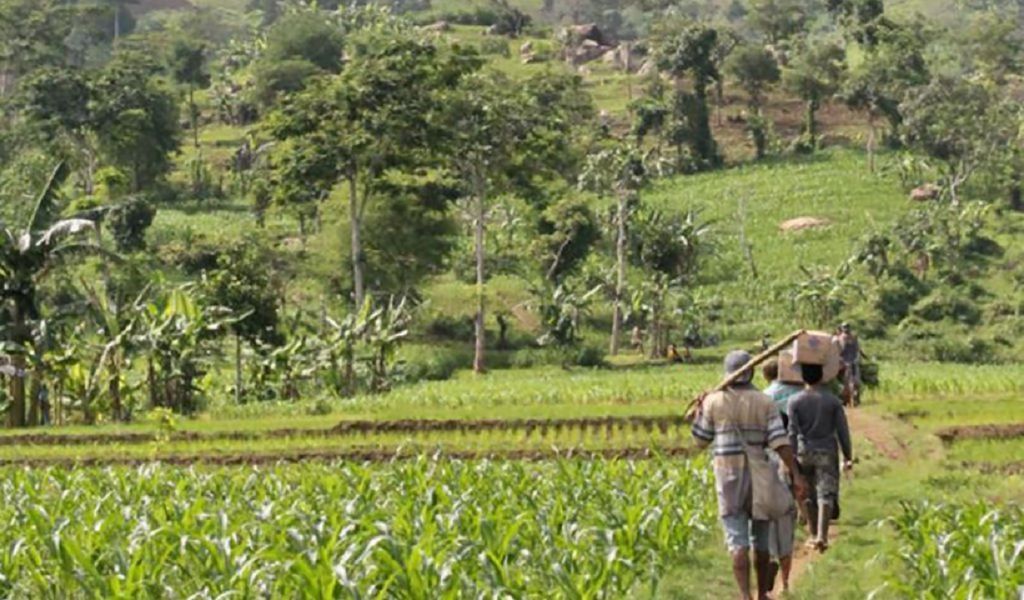Indonesia can deliver on its social forestry targets with participation of sub-national actors

The Indonesian government is moving further away from achieving CF targets, according to an article on mongabay.com, which highlights Indonesia’s CF budget cuts in 2017 to nearly half of its 2015's budget. RECOFTC’s Indonesia Country Program Coordinator, Yosef Arihadi, offers another perspective, arguing that as long as people and communities are at the center of development, there is hope.
Two years (2014-2016) have passed since the creation of the now Ministry of Environment and Forestry, during which time there has been a two-year freeze from any expansion in Indonesia’s social forestlands. During this time, the ministry aimed to streamline forestry bureaucracy and simplify policies and procedures for more efficient delivery of social forestry licenses.
The (central) government budget cut for social forestry into half of that compared to 2015 may seem like it is counterproductive toward achieving its social forestry target of 12.7 million hectares in 2020. However, there is still great opportunity for the forester Indonesian president to deliver on social forestry targets.
Implementation of the national target is moving down to provincial-level governments, where autonomy often lies and where more budget from the provincial sources must be allocated to support and achieve targets in each province. Likewise, donors, the private sector and CSOs can be more effective working with governments at sub-national levels, and develop more piloting with communities in the forests, and share and learn within forestry working groups to improve achievements toward social forestry targets.
Decades of top-down forestry sector decision-making from the central-level to the forest farmer level has ended, as it is clearer now that social forestry is not about forests but about people and their livelihoods, social and cultural needs and beyond. Forestry programs must have long-term development plans that are owned by local people and with finances to and from local sources at village, district and provincial levels. Decision-making must include participation from the provincial and below levels, with people and communities always at the center of development.
On 30 December 2016, Indonesia’s President Jokowi announced legalization of nine customary forests in Jambi, North Sumatra, and West Java provinces, totaling 13,100 hectares. Central and South Sulawesi provinces have also made good progress toward recognizing the customary forest initiatives developed in districts and provinces. For example, the first step of mapping 8.1 million hectares of customary forests (out of a total 12.7 million hectares allocated for community forests under the Jokowi presidency) has already been achieved.
The legalization of the nine customary forests is a result of planned processes from communities and legislators at the district and provincial levels. This included a series of discussions resulting in drafts and agreed policies for Governor’s Decrees or Provincial Regulations on recognition of Customary Forests. These bottom up processes arising from the community level were able to happen after the landmark Constitutional Court ruling.
Constitutional Court ruling no 35/2012 – which excluded customary forest from state forest – still has a way to go toward becoming more effective. At the same time, other policy changes also occurred between 2012 and 2016, related with decentralization and local governance. Decentralization law No 32/2004 was replaced by law No 23/2014, which switched locus of local decision-making from district to provincial level. The legalization of customary forest under this new law is in the hands of governors through provincial regulation or governor's decree.
From 2012 to 2016, after the constitutional court ruling, no single customary forest legalization was made for Indigenous Peoples. The transformation of the Ministry of Forestry into Ministry of Environment and Forestry, which took place during 2014 – 2016, was the cause of the temporary halt in progression of social forestry models (Hutan Desa, Hutan Kemasyarakatan and HutanTanaman Rakyat). With the new decentralization law, a lot of work still must be done to effectively formalize customary tenure in forests. Pressures on president Jokowi must continue to ensure effective implementation of central policy to achieve the 12.7 million ha social forestry target through adequate actions and resource allocation from provincial governments.. Initiatives from CSOs to map and document customary forests, and at the same time assist provincial parliament to draft provincial regulations, are essential.
We know social forestry cannot be achieved instantly, but there is great hope that we will reach Indonesia’s social forestry target as long as we continue to ensure that forest decision-making includes participation from the provincial and below levels, with people and communities always at the center of development.
Learn more about RECOFTC's work in Indonesia:
RECOFTC Indonesia country engagement strategy
RECOFTC programme Indonesia Facebook page

